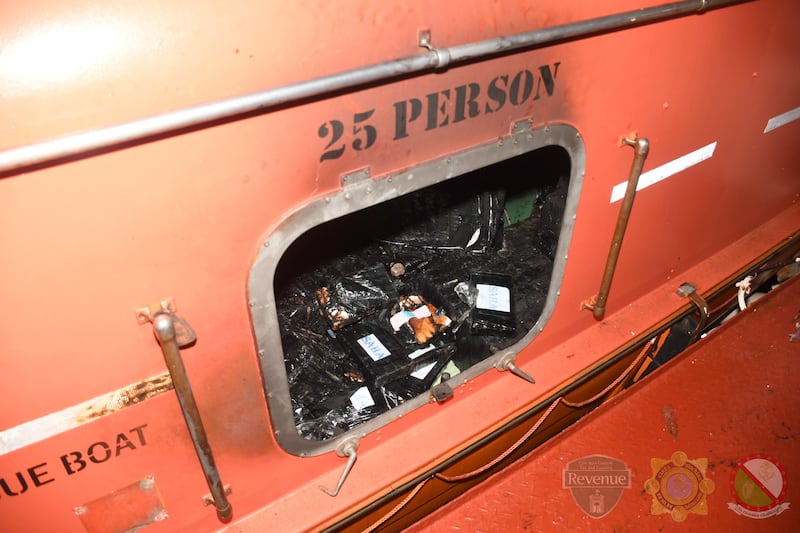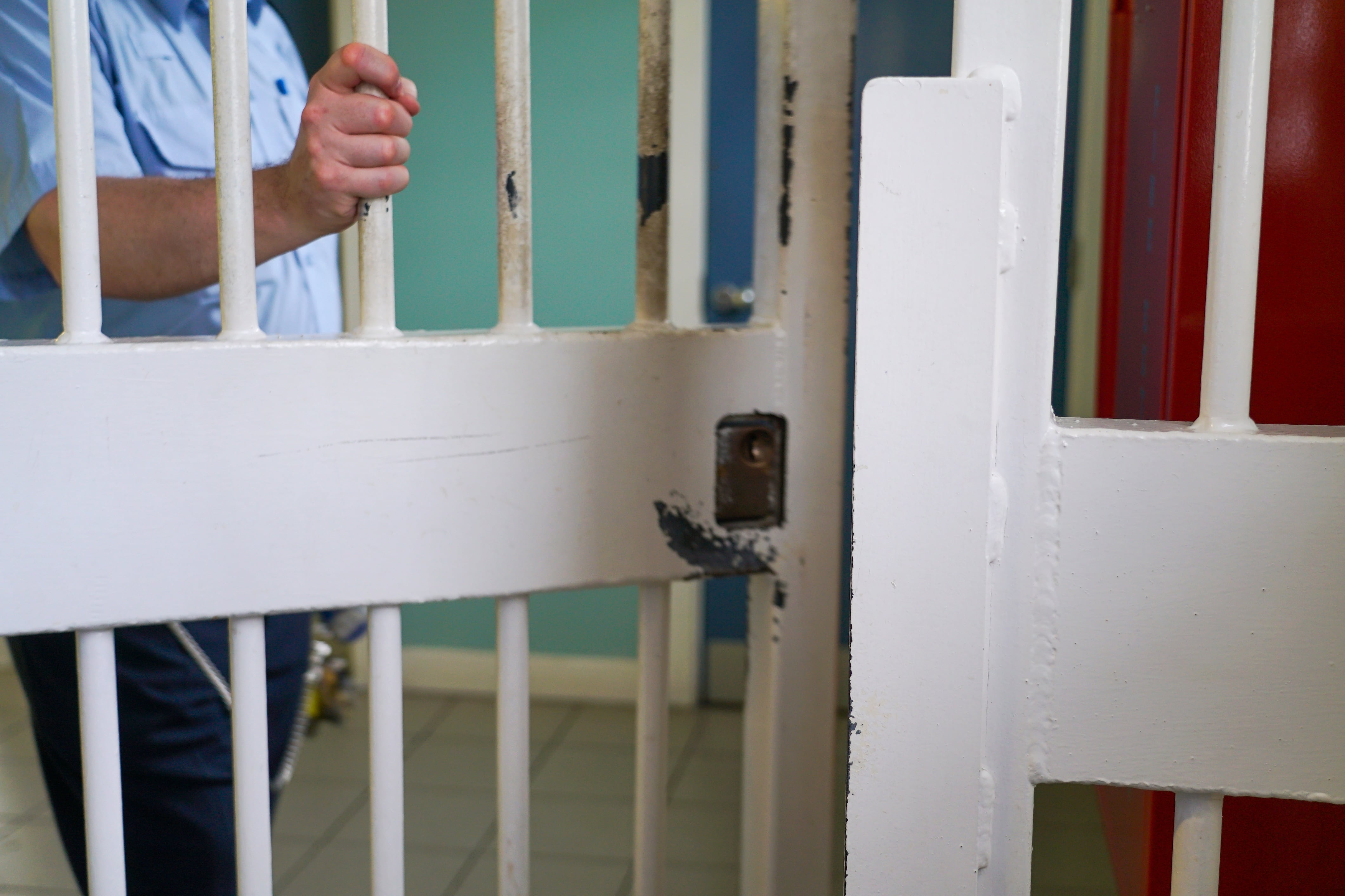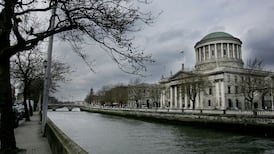The crew of LÉ William Butler Yeats were looking forward to a relaxing weekend when the ship arrived in Haulbowline Naval base in Co Cork on the morning of September 22nd, 2023.
The vessel had just completed a two-week maritime security patrol and was due to spend the next two days in port, allowing most of the crew a trip home to see family.
Those plans were scuppered when, shortly after docking, the captain was summoned to the Naval Operations Command Centre.
An Garda Síochána and Revenue, operating as part of a Joint Task Force, had received word of a massive drugs consignment about to land in Ireland aboard a bulk carrier called the MV Matthew, he was told.
READ MORE
The captain returned to the ship and briefed his crew. All leave was cancelled.
The details of the interdiction of the MV Matthew, which led to the biggest drugs seizure by weight in the history of the State, were detailed in interviews with the military officers directly involved. These include the Yeats’s captain, the leader of the Air Corps team and a senior member of the Army Ranger Wing (ARW) special operations unit, whose troops rappelled on to the moving vessel amid heavy swells while Storm Agnes bore down on the country.
The Defence Forces has requested all those involved remain anonymous due to personnel security concerns.
At the start of the mission, which would later be termed Operation Piano, the job of the Yeats was simply to keep Matthew under surveillance, along with a small fishing vessel called the Castlemore.
The taskforce believed the Castlemore was planning to rendezvous with the Matthew off southern coast and take on the cocaine before ferrying it to Ireland. The plan was to let this play out before detaining the Castlemore after it brought the cocaine ashore.
“We know now that didn’t happen,” said the naval captain. Instead, the Yeats would spend the next five days taking part in the most ambitious and dramatic operation in Irish naval history, during which it would serve as a warship, a search and rescue vessel and a makeshift prison.
“It was incredibly dynamic,” recalled the naval officer. “You couldn’t write it.”
The eventual success of the operation was all the more remarkable given the extreme constraints on the Defence Forces. While previous major interdictions involved multiple warships, the Yeats was the only one available this time round. Military planners believed four helicopters would be required to guarantee success but just one was accessible – a Defence Forces helicopter assigned to an emergency air ambulance role which had to be recalled and pressed into service.
After picking up a team of gardaí and customs officers, the Yeats sailed to a spot off the south coast where, according to Garda intelligence, the Matthew was to transfer its cargo to the Castlemore.
The Yeats’s job was to observe the transfer from a distance. The weather began to deteriorate rapidly, however – thanks to Storm Agnes and its 135km/h winds – raising doubts the handover would happen at all.

The next night, the Castlemore finally arrived but there was no sign of the mother ship. The Yeats’s captain could see on his screens that, instead of meeting the smaller vessel, the Matthew was sailing up the Irish Sea towards Dublin.
After an hour, the fishing boat sailed back inland, leading authorities to believe it was going to shelter from the increasingly perilous weather at Kilmore Quay in Wexford.
Instead, it sailed past Kilmore. It was becoming increasingly clear to the crew of the Yeats that they were not dealing with experienced seafarers.
They were also having their own problems. The deteriorating weather made it increasingly difficult for their sensors to keep track of the boat. “At one point, we lost radar contact with the vessel and we had to conduct a search over a couple of hours to regain radar contact,” the captain recalls.
At 11pm, word came through that the Castlemore had run around on a sandbank, stranding its two-man crew.
The Irish Coast Guard led the rescue operation while the Yeats hid over the horizon, ready to assist if needed.
As weather conditions worsened, the Yeats was asked to bring the stricken smugglers ashore. The men were winched up in a Coastguard helicopter before being deposited on the naval ship.
[ Hizbullah and Iran suspected of involvement in MV Matthew smuggling operationOpens in new window ]
The suspects were housed on the vessel and given food and dry clothes, before being brought ashore the next morning and taken into Garda custody. No drugs were found during a subsequent search of the sandbank and the surrounding waters, meaning the cocaine must still have been aboard the Matthew.
Now four days into the operation, the Yeats was ordered to sail at full speed towards the Matthew, which, by then, was near Rosslare. Back on land, the taskforce began to plan for the possibility of having to take the ship by force.
The Matthew, a 190-metre long bulk carrier, was carrying almost no cargo, meaning it sat high in the water. This would make it extremely difficult for naval personnel in inflatable boats to gain access.
Preliminary plans were drawn up for special operations troops to take the ship from the air. Specifically, the ARW’s air assault section – which specialises in the insertion of troops and equipment via helicopter – would fast rope on to the Matthew before taking control of the bridge and securing the crew and cocaine.
The ARW has conducted maritime assault training exercises on a yearly basis since 2009, usually involving a hijacked ferry scenario. This operation, however, had the potential to be significantly more dangerous. Just landing the team on a moving ship, crowded with cranes and cables, during heavy swells would require an immense amount of skill.
The proposed ARW operation was put to one side as a contingency, while it was decided that the safest option, for the time being, was to somehow convince the crew of the Matthew to voluntarily bring the ship into port.
At 5am, on September 26th, the Yeats intercepted the Matthew off the coast and ordered it to sail into Cork Habour. The Matthew responded that it had suffered engine failure and needed 48 hours to make repairs.
By this stage, the situation on board the cargo ship was becoming increasingly chaotic as the crew realised their smuggling operation was a failure.
After failing to rendezvous with the Castlemore, their criminal bosses in Dubai instructed them to put the cocaine in a lifeboat and prepare to land them ashore.
Later, the crew were wrongly advised that the Irish authorities had no legal authority to board their vessel. It subsequently emerged in court the Dubai criminals were relaying legal advice from ChatGPT.
By the 25th, the Matthew’s Iranian captain, Soheil Jelveh, had had enough and made a distress call asking for an emergency medical evacuation.
A short time later, he was winched on to a Coast Guard helicopter while carrying $40,000 in two suitcases. Jelveh was arrested by gardaí shortly after when he tried to leave hospital.
This left Harold Estoesta, a 31-year-old Filipino and the ship’s second in command, to attempt to stall the Yeats. The captain informed him over the radio, however, that he did not believe his story about engine failure.

To everyone’s surprise, Estoesta then appeared to comply with the Yeats’s orders and set a course for Cork Harbour. “Things kind of calmed down a small bit. It looked like things were going our way and that in the next couple of hours it would make landfall in Cork,” said the Irish naval captain.
It was not to be. An hour later, the Matthew turned south and set a course for Sierra Leone. “It was apparent to me then that I was in hot pursuit of that ship and that I was authorised to use force, if necessary, to get the vessel to comply with my instruction,” said the captain.
Under Irish law, naval captains may fire across the bow of a fleeing ship to force it to comply. If this does not work, they may fire directly on the ship’s engines.
Such action is rarely required but not without precedent. For example, in 1985, LÉ Aisling fired about 600 rounds during a five-hour pursuit of a Spanish fishing vessel which refused to stop.
The captain of the Yeats ordered his crew to fire several bursts in front of the Matthew, initially from assault rifles and then from mounted machine guns.
As this went on, radio communications were becoming increasingly fraught. Estoesta pleaded with the Yeats to cease fire.
The naval captain recalled him saying: “There’s people here who are innocent. We have families at home, wives, children. We don’t want to die. Please de-escalate.”
The captain replied that Estoesta was responsible for the outcome of the situation. “From their point of view, I imagine it got quite frantic on board,” the officer said.
Back on land, it had been decided the helicopter assault was the only viable option left.
“We prepped the aircraft. We got the weapons, loaded up, our armour and our personal weapons,” said the Air Corps Commander.
Planners discussed the risk profile of the mission and at what point it would become too dangerous to continue. Personnel were also briefed by the Defence Forces legal section on the rules of engagement – in other words, where and when they were permitted to use lethal force.
Just before 1pm on the 26th, then tánaiste and minister for defence Micheál Martin was briefed on the plan. He gave the go ahead and, 20 minutes later, an AW139 helicopter containing the ARW team took off from Waterford Airport and sped towards the Matthew.
The plan envisaged the troops descending by rope on to the deck. Cover would be provided by an ARW sniper who would remain on the aircraft and an Air Corps door gunner operating a machine gun.
Rescue crews sat in Rigid Hulled Inflatable Boats – known as Rhibs – aboard the Yeats, ready to deploy at a moment’s notice if the helicopter had to ditch in the sea, while other sailors manned the ship’s guns.
As the helicopter approached, an Air Corps maritime patrol aircraft made a low pass over the vessel in a last-ditch effort to convince it to comply.
Instead, the Matthew began to manoeuvre back and forth, significantly increasing the danger faced by the aerial assault team.
The team leaders realised then it would be a “non-compliant boarding”. To reduce the risk to the team, the pilot positioned the helicopter so that the machine gun and sniper were facing the bridge while the ARW operators fast roped off the other side.
“The deck was very challenging, with whip antennas and high cranes left and right. So, it made us do probably the highest fast rope we’ve ever done on to a vessel,” said the Air Corps Commander.
All the while, the Matthew continued to turn back and forth. “So it’s an extremely challenging and dangerous insertion,” he said.
The ARW team managed to get on the deck before, with their hands burning from the rope, moving to take control of the ship. Seconds later, the helicopter pulled away, having been unable to drop down several additional bags of equipment for the soldiers.
“We just needed to come off the deck because it was starting to get too dangerous,” said the air commander.
Although they may appear chaotic, ARW assaults involve “a really graduated number of steps”, said the special operations officer.
“Without getting into operational techniques, the priority generally is to take the vessel under way and control it,” said the officer. “That means dominating the people on the vessel and taking control of key spaces so it can’t be steered in a different direction or rammed into another vessel or scuttled.”
The crew offered little resistance and, within a few minutes the ship was taken, the officer said. “The lads moved very quickly to dominate. The psychological effect of that, particularly for people who are seamen and not involved in criminal activity, can be quite intimidating.”
A fresh problem faced them immediately, however. Before the boarding, the crew had started to burn the cocaine in the lifeboat. Faced with the prospect of losing the evidence, ARW operators quickly grabbed fire extinguishers and doused the flames.
With the crew in handcuffs, Revenue personnel were brought abroad, while an ARW operator piloted the Matthew, along with its 2.2 tonnes of cocaine, into Cork Harbour.
On Friday, eight members of the crews of the Matthew and Castlemore received prison sentences of between 13 1/2 and 20 years – a combined 129 years in total – after pleading guilty in the Special Criminal Court to possession of €156 million worth of cocaine.

The court heard the drug smuggling operation was organised by a transnational organised crime group based in Dubai, which had “immense capabilities, unlimited resources and a global reach”.
Today, the Matthew sits rusting in a berth at Passage West in Cork while the Castlemore, or what is left of it, is still stranded on the sandbank off Wexford.
In the aftermath of Operation Piano, those involved received praise domestically and internationally, with other militaries asking the Defence Forces for advice on planning similar operations.
For the Defence Forces, Piano’s success was a much-needed morale boost, given recent controversies surrounding abuse of women in the ranks and the organisation’s recruitment and retention difficulties.
Some members privately complained, however, that the threadbare resources available for the interdiction only underlined the systemic problems facing the military.
“You need two helicopters at a minimum to provide mutual support and that’s a major, major issue because it’s a risky operation anyway,” said former ARW officer Cathal Berry after the operation.
“What if the helicopter had to ditch in the sea or if it had a crash on the ship itself?”
Those involved in the operation are more sanguine when asked about the shortages.
“At the end of the day, we had the assets that we had and it was the people that made it work,” said the Yeats’s captain.
“There were periods there where the entire crew was up for 24 hours. But everybody swung up the arms and gave the maximum effort.”
The air commander said his “ideal” package for such an operation is four helicopters; two to insert troops and two to provide covering fire.
There is “doom and gloom but there are positives coming”, he said, pointing to the recent purchase of four H145M helicopters capable of deploying advanced weapons systems and the planned procurement of a fleet of larger “super-medium” helicopters.
Perhaps the biggest sign of hope for the Defence Forces is the recent stabilisation in the number of people leaving for the private sector and green shoots in terms of recruitment.
Meanwhile, the Yeats and its crew have continued their run of success in drug interdiction operations. On Tuesday, the ship played a vital role in intercepting a €31 million cocaine shipment off Courtmacsherry in Cork.
“It’s just a lucky ship, I suppose,” said one Defence Forces officer last week.


















